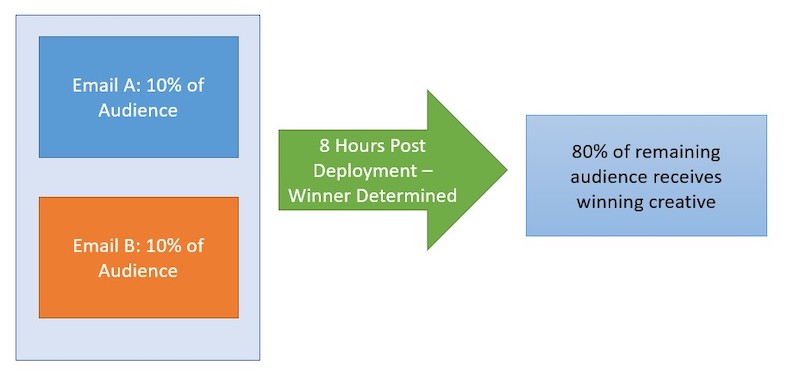The email marketing needs of ecommerce merchants are increasingly sophisticated due to improvements in technology and the demands of consumers. Email service providers are responding with new features and capabilities at, frequently, a lower monthly cost.
In the post, I’ll address the essential email-marketing features for ecommerce merchants in 2020.
Marketing Tools
- Easy to use. Typically, marketers do not have a technical background. Thus an intuitive user interface is key.
- Import data in batches. The ability to easily import new subscribers or a segment of existing subscribers is critical.
- Segmentation tools. The most effective email programs use segmentation to customize the creative, offers, and messaging to a single subscriber or group of subscribers. Built-in tools to group data or audiences are increasingly a standard feature.
- Automatic A/B testing. Marketers require tools to facilitate easy A/B tests to a subset of data for a set period and then automatically deploy the winning message.

To drive opens and clicks, marketers often demand tools to facilitate A/B tests and then automatically deploy the winning message.
- Send time optimization. An artificial intelligence feature, send time optimization tracks when each subscriber typically opens and clicks an email, and then deploys messages at that time. The process removes the guesswork of when to send.
- Auto-responses. The ability to easily create triggered emails from the same platform as promotional ones is a must-have.
- Comprehensive reporting. Aligning a company’s key performance indicators to standard email reports can help monitor overall performance. Visual heat maps of clicks on creatives, as well as metrics by device, are examples of helpful reporting features, in addition to the standard opens and clicks.
- Integrations. Email marketing in a silo does not generate optimal performance. Integrating email with your ecommerce platform and other vital services is a basic requirement. Examples include custom product recommendations and abandon cart and abandon browse emails.
- Support. Email marketers have questions, often immediate. Poor service from email service providers is among the top reasons why companies switch to a new provider.
Creative Tools
- WYSIWYG editor. A what-you-see-is-what-you-get interface allows marketers with no coding skills to create and edit compelling email designs.
- Email templates. Having basic, preset templates that render on desktop and mobile can save time.
- Image hosting with auto redirects. Hosting images on an ESP’s servers with automatic redirects in real-time after an email is deployed facilitates personalization and drives response.
- Web analytics tracking. Adding URL parameters to links in an email will facilitate tracking in Google Analytics and similar.
System Features
- Cloud-based platform accessible 24/7. Email marketing emergencies can occur outside of regular working hours. The ability to access the platform at any time is essential, as is the availability of round-the-clock support.
- Setup and maintenance. In my experience, the more complex the ESP’s features and functions, the more setup and maintenance is needed. Avoid ESPs that require excessive staff resources.
- History of downtime or upgrade schedules. Unexpected downtime can prevent email deployments and block conversions. Choose a platform with a history of reliability.
- Availability of shared and dedicated IP addresses. Many ESPs restrict dedicated IPs or force clients to accept shared IPs. Make sure your provider that has the correct setup for your program.
- Deliverability management. An ESP should provide deliverability feedback — such as unsubscribes, bounces, address changes, and undeliverables — and then automatically update your master database to keep it timely and clean.
Pricing
Pricing structures among ESPs vary, complicating comparisons. Some ESPs have a fixed monthly fee for set features and email volume. Others have a combination of fixed and volume prices based on the number of deployments. Focus on what you need. Don’t pay for unnecessary features.


